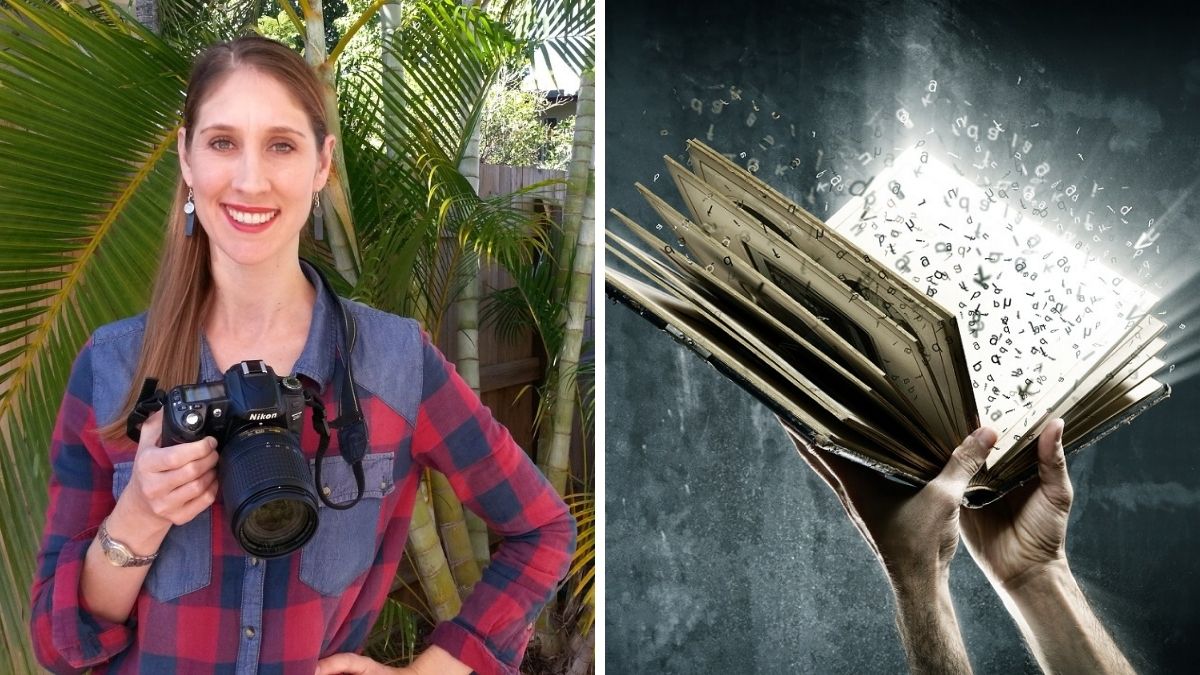
How to make your writing more captivating (AKA not boring!) in 3 steps
When I’m talking too much my husband gives me a smile and a hurry-along signal.
Indeed sometimes we all tell a story with too much background information or detail and the other person is waiting for us to get to the point.
Of course a conversation like this can be boring and so too can a life story.
So what makes a good story and what writing techniques can we use when we sit down to create to keep our audience’s attention?
Keep reading to find out … I promise to get straight to the point!
Related article – Writing tips: The ultimate guide of life-story tips for new writers
What makes a good story?
Writing a good life story is not out of reach.
Firstly remember why and who you are writing for.
Also think about the guiding message of your writing that you want to convey.
In short, the theme or themes.
Certainly having these answers clear in your mind creates a strong foundation and context for good writing.
Now let’s look at some top writing ideas …
Related article – Why write: Why is writing important and why do we write
Related article – What is theme? Get theme definition and theme examples without the work
Dialogue writing
What makes a good story? Dialogue or writing what people say can make a good life story.
First it breaks up the pattern and flow of copy for a reader.
Second it injects characters’ points of view while showing how they interact and think.
Certainly a few key sentences of dialogue when telling an anecdote will do the trick.
And if you can’t remember exact wording make it as true to what you think was said.
That is to say, maintain the spirit of the original conversation and use phrases your characters would typically have said.
Related article – Dialogue like a pro: See how easily you can use speech marks and quotes in writing
Character and settings
What makes a good story? Great setting and character descriptions that keep a reader engaged!
Firstly skip long and airy descriptions for key sentences with specific detail.
For example, describe the house where you grew up.
Certainly don’t wax on about the colour of the grass next door, how it bent in the wind or changed colour with the seasons!
Instead talk about specific detail relating to your home.
For instance: what the house facade looked like, walk readers briefly through the gardens and rooms, highlight unusual features, talk about your neighbours and neighbourhood at the time, explain why you liked or hated it, etc.
Related article – Super settings: Setting examples and how to write the setting for your life story
Suspense stories
Suspense is a classic technique used in movies that you can also use in your writing.
Use it to build interest and engage your readers.
For instance you might have written: “When I was in Year 1 I met Betty and she would become the love of my life. We were married for over 50 years.”
Instead start out with a few details to build suspense: “In Year 1 I meet a tall girl Betty who had curly pigtails with blue ribbons.”
Then keep her popping back into your story with little anecdotes or ‘suspense breadcrumbs’ here and there.
Now the reader is thinking: “Hmm, this Betty girl, what’s going to happen here?”
Suspense is a sure-fire way to make a good story.
Related article – How to write a good story: The flashback, parts of a story and reflective writing
Final say: What makes a good story?
Creating an interesting life story for others isn’t rocket science.
By keeping a few key writing techniques in mind you can create a page turner.
Top suggestions would include adding: dialogue, colourful descriptions and sprinkles of suspense.
And for more ideas see this companion article here.
Certainly a captivating story will be satisfying to write and read.
And best of all, no one will give you the hurry-up signal to get to the point!
Happy writing!
Free gift!
Do you have a plan to see a life-story project through? Sign up here to get my free video training on how to make a rough outline.
Your say
What writing technique will you try? I’d love to hear your thoughts. So send me an email or leave a reply in the comments section at the end of this article.
Get in touch
Have you hit a roadblock planning, creating, polishing or finishing a life story? Let me know here so I can help!
Don’t miss an article
Sign up here to get instant notifications when new material is published.
First published October 11, 2018: This article has been updated and improved.

